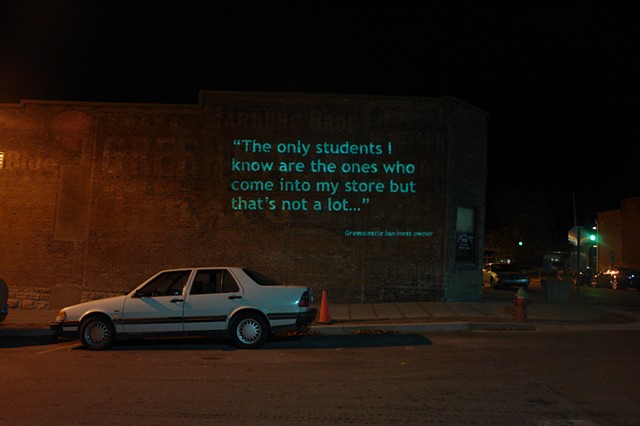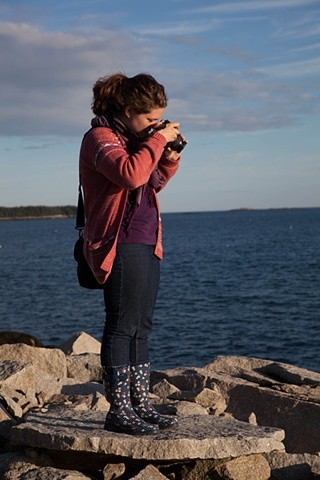Teaching Philosophy
Blogs: http://codell.tumblr.com/
In my teaching I strive to be both a mentor and a conduit to intellectual discovery. At the core of my teaching practice is a desire to empower students. By not feeding them the easy answers, giving them practical technical skills, challenging their ideas, helping them develop their creative voice and supporting them in all ways possible, I hope to foster independence and self-reliance. I want students to claim their own educational experience as well as find the confidence to pursue their art and passion in a culture that often doesn’t share the same values.
I also want all my students -- no matter what their major, interests or expressed future goals-- to become more visually cognizant and critical of the world around them.
Today’s students are being raised in an image-saturated society that constantly works to manipulate and alter their perceptions of the world and in some ways their own sense of being. It is my hope that training students to both produce and analyze images will give them the skills to dissect the visual coding that occurs in advertising, fashion, political media and even documentaries and films. Visual literacy is a necessary skill if one hopes to transcend the current forms of visual manipulation that come from a variety of directions and sources.
I take great risks in teaching and have seen huge rewards in my students learning as well as their lives. My teaching often goes beyond the traditional classroom and provides others at DePauw as well as myself with a variety of collaborative and non-traditional opportunities for teaching, artistic experience and notions of how art and life can inform the academic environment. I am also very interested in promoting experimental and interdisciplinary artistic opportunities for students. These expand students’ notions of what art can be, engage the wider university community in the artistic process, encourage participation in unique, collaborative formats, and give students a non-traditional public environment in which to exhibit their work. For example, my students have projected their videos into a local quarry at night and projected historical re-photographic collages onto buildings in the town square.
As I take risks in teaching, I also want my students to take risks in their creative process. There is a great satisfaction, for the students and me, when one of them takes an intense risk in their work. Students have to be willing to keep developing, exploring, discovering and challenging themselves. They have to understand that one of the hardest parts of art making is to hang in during the struggles, and to not stop when it gets difficult.
One of my major goals in the classroom has been to place an emphasis on critical thinking and a conceptual approach to art with the intent of supporting the liberal arts mission. This involves integration of both ideas and concept into my studio curriculum. Another key goal is to get the students to develop their own identity as artists. If art is about communication, about making images, about developing ideas while engaged in aesthetic endeavors, one has to develop the skills to communicate at a level that is engaging and pertinent within the visual world.
I help them create content by developing their skills to analyze and critique the work of their peers; by having them critique the work of other artists; by providing examples of how other artists address content; and by incorporating texts that challenge their visual understanding. All of these strategies help them learn to “read” an image. It is crucial that they be critical of their own art making process, yet it is also crucial to provide them with the technical skills to actually create the work.
I expect my students to be critical artists -- critical in the sense of challenging their notions of art, their own and of that of their peers. Without this mind set fine arts is reduced to recreational arts and crafts, lacking quality value judgments. This continues hand in hand with being informed, while referring to articles and readings that can show them how to critique.
Making art, as with any discipline, takes a great deal of time to let ideas and concepts develop. As an artist I can’t let myself wander through the world of mediocrity, nor can I let my students -- it is too painfully uninteresting.

